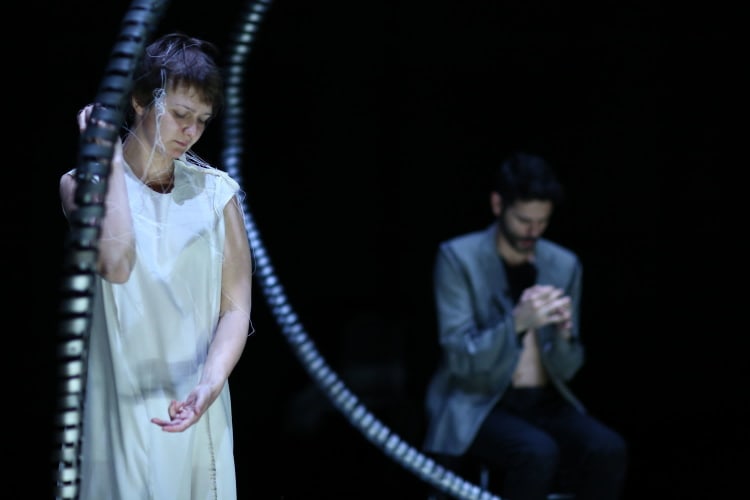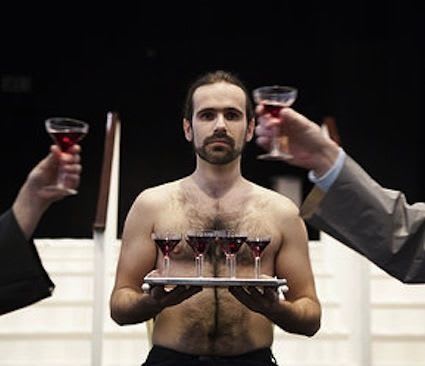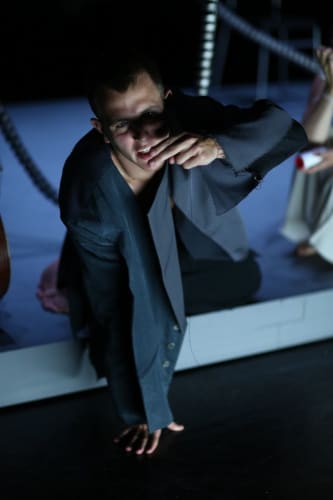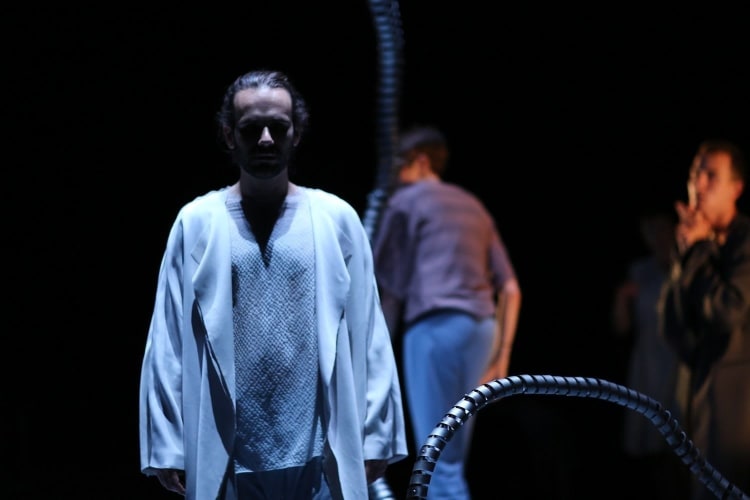Zi Ling is a painter and visual artist, new, she says, to theatre, but in this collaboration with choreographer Jemma Gould, set designer Jing Wang and costume designer Tong Zhao, lit by Hua Tan, who was also her dramaturg, this is an accomplished, hour-long piece of physical theatre that showcases the work of several Chinese MA graduates from the Royal Central School of Speech and Drama.
Inspired apparently by the paintings of Francis Bacon, Ling has set out to “analyse the details in Bacon’s works and expand them in theatrical form” to “try to re-interpret the emotional tone in Bacon’s work, giving it a different shape and colour.”
There are some echoes of Bacon certainly—bodies slumped or fallen, chairs, a framing, though here with a serpentine arch of coiled metal and an isolation of elements—but the link with Bacon is not particularly clear or necessary in what is an intriguing piece of physical theatre created by four dedicated and precise performers: Monika Klimaite, Joe Garbett, Nectarios Theodorou and Inda Pereda.
It is played out on and around a large, oblong platform, which can be rotated to provide different perspectives, and given an almost monochrome palette that perhaps helps concentration on the detail of movement.
Two musicians make as big a contribution to the piece as the actor/dancers: Julius Tedaldi on cello, who also becomes part of the physical performance, set apart from the main performance area, and Joe Garbett on acoustic guitar, though both instruments are amplified. They usually play individually but sometimes come together and provide not only the pace but also much of the energy and interest of the performance. No composer is named so presumably the credit is theirs.
Much use is made of threads joining the performers, though it is not always clear who is in control of them. At first, it is the sole woman with cords controlling the movement of a pair of shoes, the bare feet of the man walking alongside them synchronised with every movement they make, but soon it is a thread linking one girl's hands with a man’s hand that makes him match every gesture she makes with it. At another time, her mouth is joined with a man’s mouth.
Is this about who leads in a relationship? About the bonds that tie two lovers together (and eventually leave the woman in a tangle of her own making)?
At various points the performers line up and change or alter their clothing. In a splash of colour, the woman wears a blue outfit that the men partly dismember. In one frenzied sequence, she begins a dance of tarantella-like pace, collapsing repeatedly as she drives herself further.
In another scene, a strange waiter with a shirt as a napkin pours wine that the woman knocks back glass after glass in rapid succession then dribbles it out over another man’s shoulders. There is no obvious narrative here and probably none is intended, although the abstractions sometimes conjure up elements of relationships.
It is a work that could easily seem self-indulgently pretentious but avoids that because it rings so many changes and is driven by such stimulating music so that you can’t help admiring its invention and the skilled dedication of the performers.



